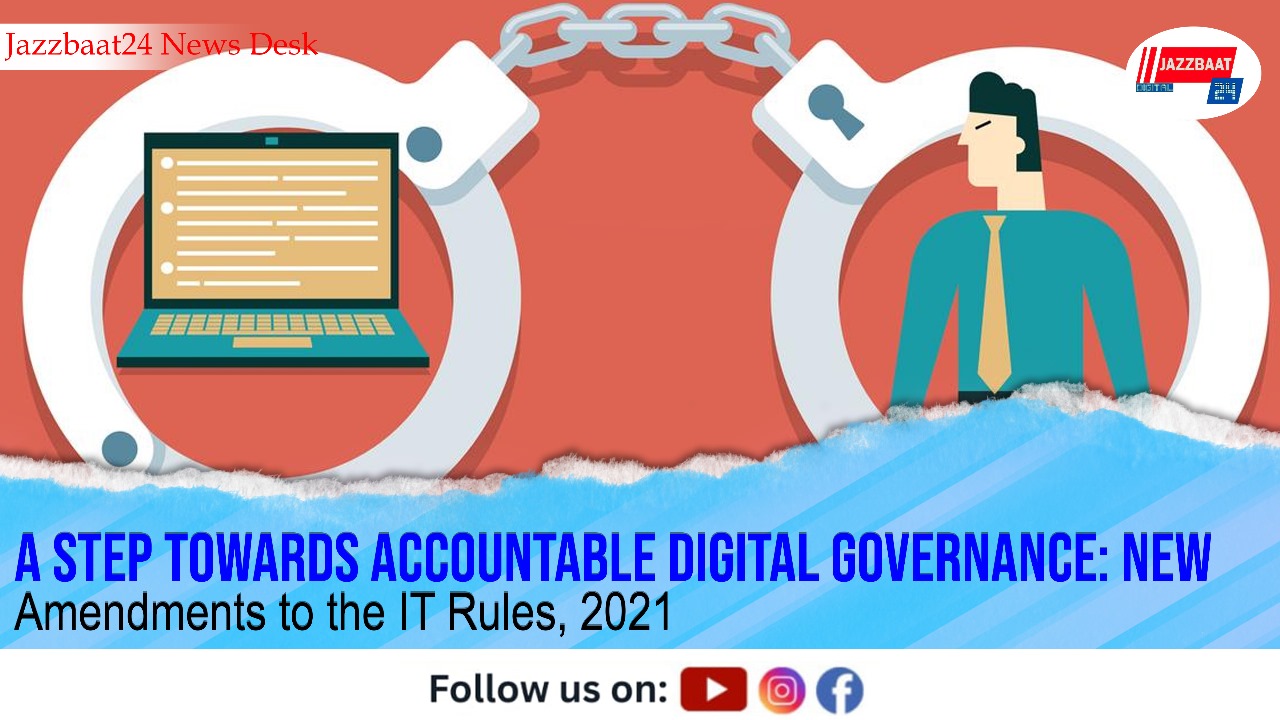In a rapidly digitising democracy like India, the line between regulation and restriction is often fine. The latest amendments to the Information Technology (Intermediary Guidelines and Digital Media Ethics Code) Rules, 2021 announced by the Ministry of Electronics and Information Technology (MeitY) reflect the government’s attempt to tread that line with greater care. The changes, notified under the Information Technology (Intermediary Guidelines and Digital Media Ethics Code) Amendment Rules, 2025, reinforce transparency, proportionality, and accountability in how unlawful online content is taken down by intermediaries such as social media platforms and web hosts. The new framework, effective from 15th November 2025, strengthens due diligence obligations under the Information Technology Act, 2000 and introduces critical checks against misuse.
The original IT Rules, 2021, were meant to hold digital intermediaries accountable for user-generated content while ensuring online safety. However, over time, concerns arose over the arbitrary removal of information and overreach in government notifications. MeitY’s latest amendments to Rule 3(1)(d) aim to correct this imbalance by introducing structured oversight, defined accountability, and procedural transparency.
At the heart of the reform lies the requirement of senior-level authorisation. Any direction to remove content can now only be issued by officers of significant rank, not below Joint Secretary or equivalent for government departments, and not below Deputy Inspector General of Police (DIG) in the case of law enforcement. This provision ensures that content takedown decisions are not left to lower-level functionaries, reducing the risk of politically motivated or impulsive actions.
Equally significant is the introduction of reasoned intimations. Under the new rule, directions for removal must specify the legal basis, statutory provision, and exact URL or identifier of the content in question. This ends the era of vague or overly broad orders, aligning the process with the “actual knowledge” requirement under Section 79(3)(b) of the IT Act. For intermediaries, this brings much-needed clarity, ensuring that compliance with takedown notices is legally sound and verifiable.
Further strengthening the framework is the periodic review mechanism. Every order issued under this rule will undergo monthly scrutiny by an officer not below the rank of Secretary in the relevant ministry. Such reviews ensure that restrictions remain necessary, lawful, and proportionate, echoing the principles of the Supreme Court’s jurisprudence on free speech and digital governance.
These measures collectively mark a shift from control to responsible governance. They establish a balance between the rights of citizens and the State’s obligation to maintain law and order, ensuring that online regulation does not translate into censorship. By instituting reasoned decision-making, hierarchical accountability, and systematic review, the amendments reaffirm India’s commitment to democratic transparency in the digital sphere.
However, the real test will lie in implementation. For these reforms to work, the government must maintain a clear separation between regulation and surveillance, and ensure that “reasoned intimations” do not become a mere bureaucratic formality. The periodic review committees must function independently and uphold the spirit of proportionality and fairness envisaged in the amendments.
In a world where misinformation spreads faster than facts, regulatory vigilance is necessary. Yet, it must operate within constitutional boundaries. By embedding safeguards and promoting clarity, the IT Rules (Amendment) 2025 mark a positive step towards restoring trust between the State, intermediaries, and citizens. The emphasis on accountability and senior-level oversight represents a maturing phase in India’s digital governance, one where the right to expression and the duty to regulate can finally coexist within a transparent, law-bound framework.
